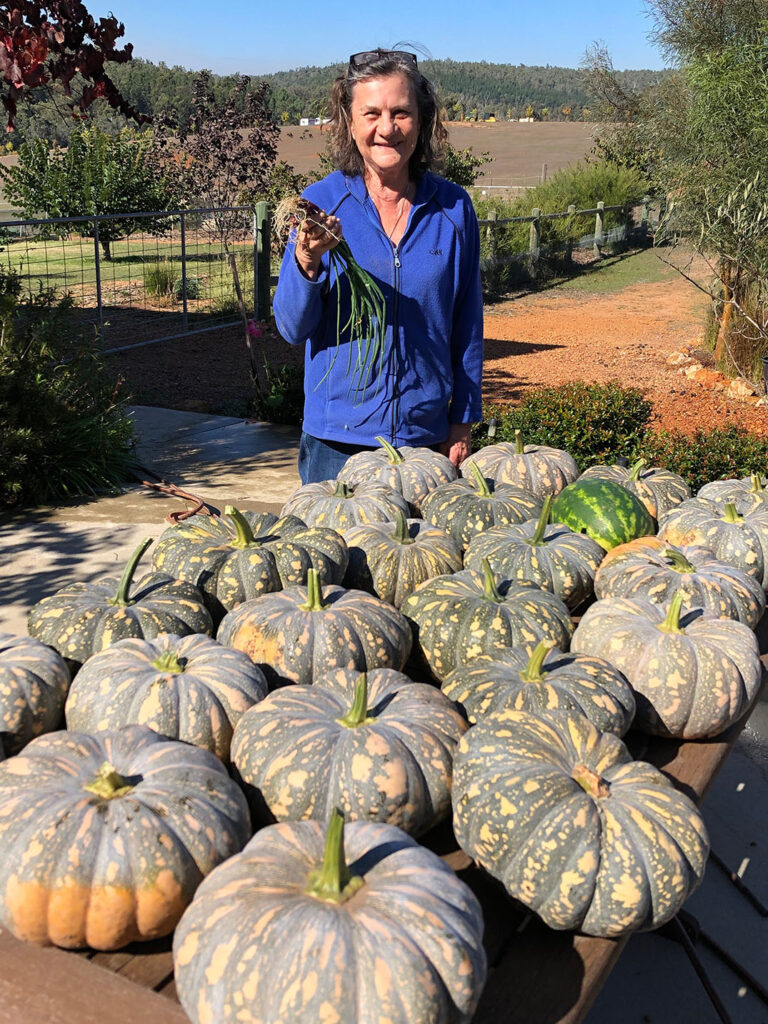
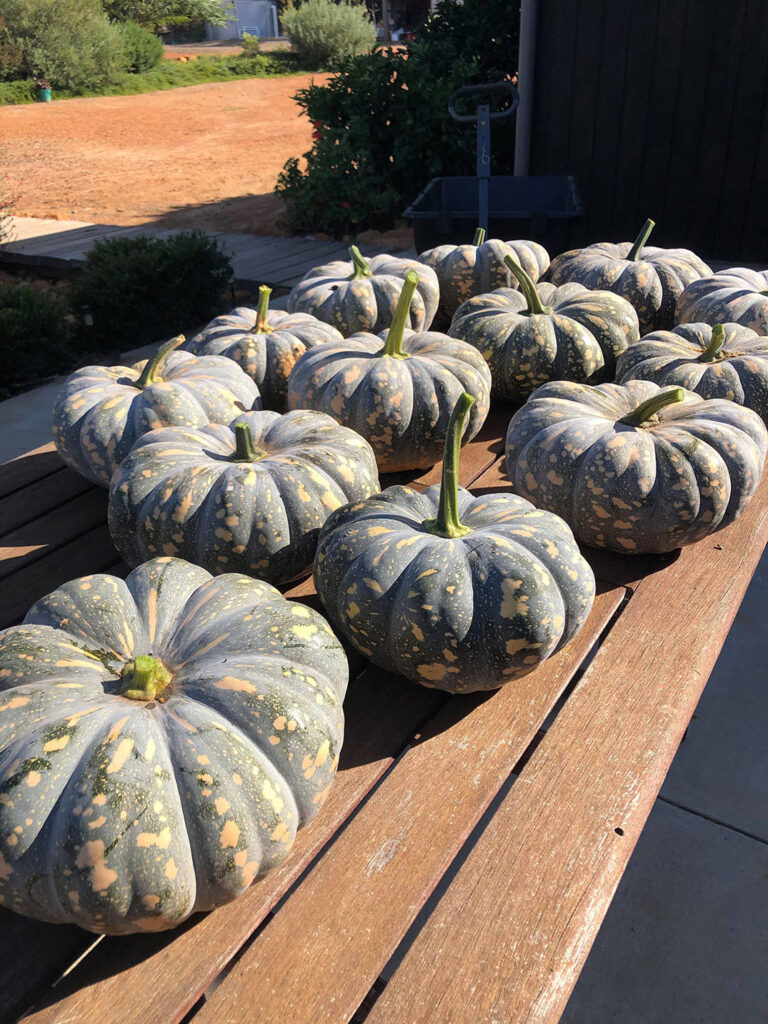
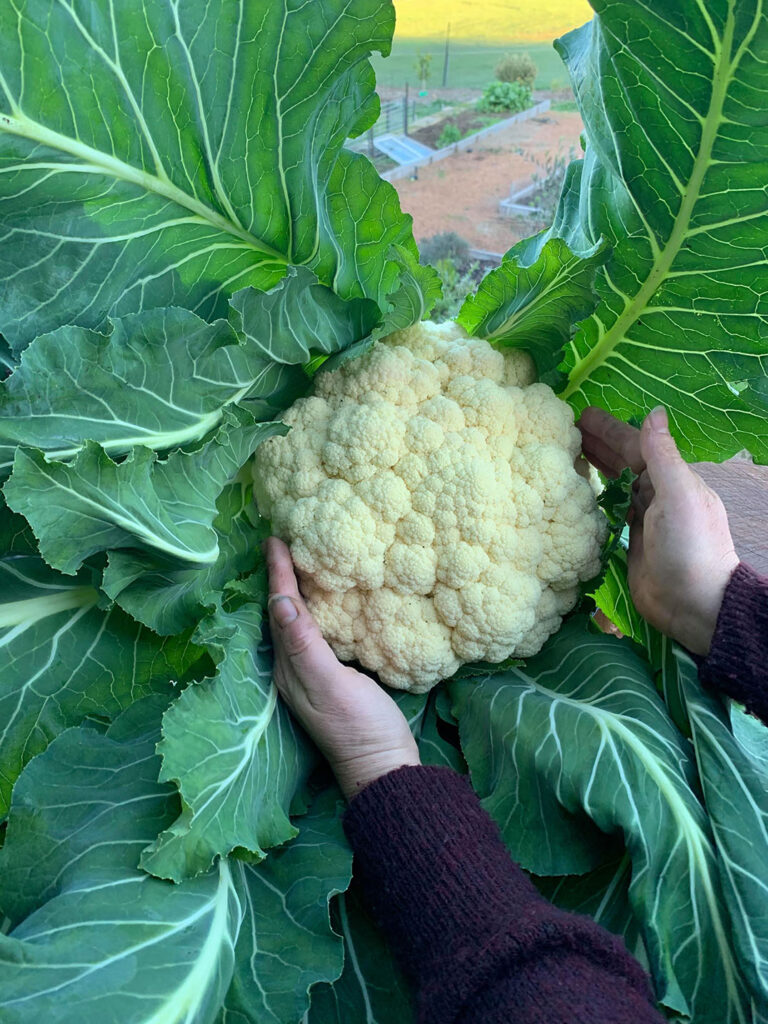
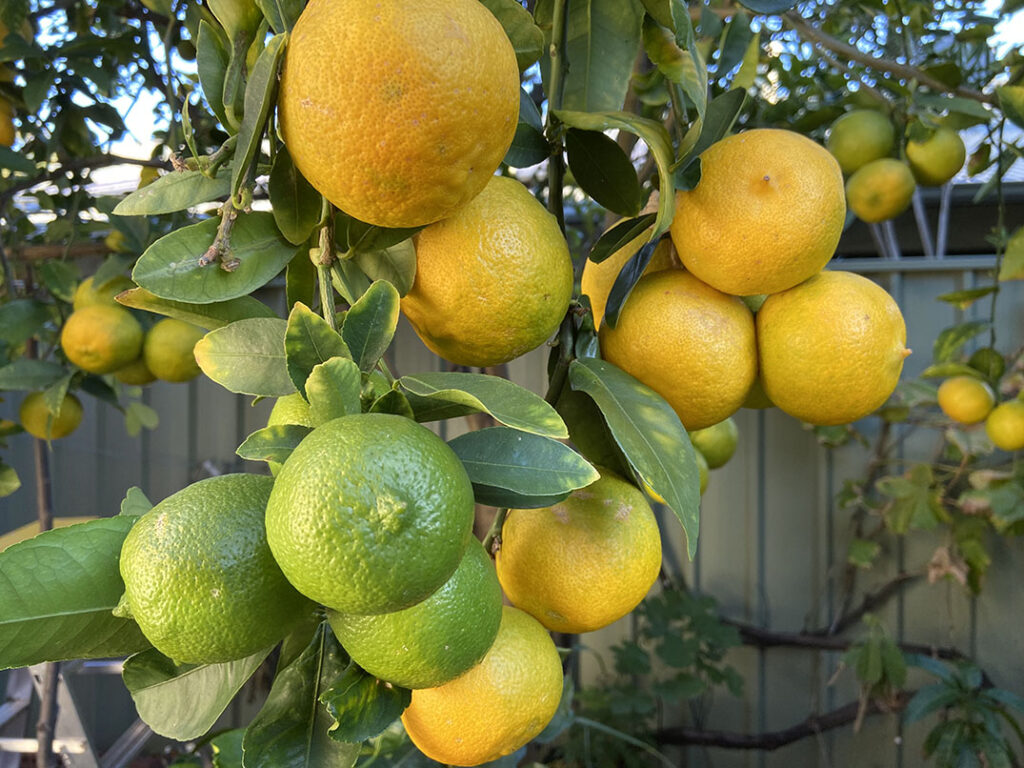
Quality produce grown at home
Pumpkins, Cauliflowers and Tahitian Limes
Mono Calphos and BLEND NS + TE liquid fertilisers applied alternately
Harvest dates: April, May, June 2020
Pumpkin: Pumpkin: Pumpkin offers more than just colour at the table: it is both very delicious, highly nutritious, and a low calorie, low fat, high-fibre food. Just 120 grams of cooked pumpkin provides:
Calories: 50 Protein: 2 grams Fat: 0. Carbohydrates: 11 grams. Fibre: 3 grams (12% of DV for fibre). Sugar: 4 grams. Calcium: 4% of the Daily Value Iron: 4% of DV. Vitamin C: 8% of DV. ProVitamin A: 280% of DV (Reference: Healthline).
Fibre-rich, pumpkin has a low Glycemic Load (GL) of 3 even though its Glycemic Index (GI) is high at 75. This means that pumpkin eaten at a realistic level (120 grams or less) is unlikely to be a problem. It is high in carotenoids (ProVitamin A) so it is ideal to provide a significant portion of daily needs for Vitamin A. Pumpkin is enjoyable as a pumpkin-spice soup, as pumpkin pie, or as delicious pumpkin bread made from pumpkin flour.
Fertiliser: For a productive patch of pumpkins use a NPKS fertiliser low in nitrogen. High nitrogen will increase size of pumpkin but lowers productivity (numbers of pumpkin per plant). Trace elements are important for increasing photosynthesis for the plant to synthesise carbohydrates and vitamins. For simplicity we recommend our Mono Calphos liquid fertiliser applied alternately with BLEND NS + Trace Elements liquid fertiliser for both quality and productivity (see photos). Call us for details.
Cauliflower: Cauliflower is regarded as a highly desirable vegetable with a significant source of nutrients for healthy living. It is very low in calories yet contains many types of vitamins and minerals for health. One cup or 120 grams of cauliflower contains:
Calories: 25 Fibre: 3 grams Vitamin C: 77% of RDI Vitamin K: 20%of RDI Vitamin B6: 11% of RDI. Folate: 4% of RDI. Pantothenic acid: 7% of RDI. Potassium: 9% of RDI. Manganese: 8% of RDI Magnesium: 4% of RDI Phosphorus: 4% of RDI (Reference: Healthline). RDI (Reference Daily Intake).
Cauliflower is a great source of antioxidants like Vitamin C and a sulphur containing antioxidant sulforaphane. It is high in carotenoids and flavonoids which reduce the risk of several illnesses. Being low in calories, cauliflower helps with weight loss. Cauliflower is easy to add to diets as a tasty vegetable stir-fry including other vegetables.
Fertiliser: As per pumpkins above, using our balanced liquid nutrients gives outstanding results. Cauliflowers do well on composted beds that has been pre- treated with our liquid fertilisers before planting. To 7 litres water in a watering can add 500 mL of NPK Supreme, mix and spray on to 10 square metres. Repeat with 500 mL BLEND NPKCal. Plant 3 days later for excellent establishment and large- sized, tasty cauliflowers at harvest. Repeat liquid fertilisers at 3-week intervals, as above, with 100 mL NPK Supreme and 100 mL BLEND NPKCal for excellent quality and size (see photo). Call us for details.
Tahitian Lime: Limes, like oranges, are a great source of the anti-oxidant Vitamin C (ascorbic acid) and many other nutrients important for immune systems, to reduce risks of heart disease and help to protect against kidney stones. Limes promote healthy skin and assists in the absorption of trace elements from diets, including iron vital for oxygenation of cellular tissues. One whole lime (about 67 grams) provides:
Calories: 20. Carbohydrates: 7 grams Protein: 0.5 grams Fat: 0.1 gram Fibre: 1.9 grams Vitamin C: 22% of RDI. Iron: 2% of RDI. Calcium: 2% of RDI. Vitamin B6: 2% of RDI. Thiamine: 2% of RDI. Potassium: 1% of RDI. (Reference: Healthline).
Limes are a staple ingredient of cooking in South East Asian countries and in Mexico. Popular productive varieties are the Persian, Tahitian, Rangpur and Mexican Key limes. They are valued for their delicious, pungent juice and floral aroma of their zest. Limes make popular pickles and add flavour and freshness to drinks. Lime juice mixed with water and vinegar is an efficient non-toxic cleaning agent, with some studies showing it to have anti- microbial properties.
Fertiliser: Tahitian lime trees are vigorous, hungry feeders. They do well on well- drained sandy-loam soils. Tahitian lime is a highly productive citrus if fed regularly with our organic-based liquid fertilisers containing trace elements. Single bunches containing up to 9 limes are common, and high production up to 40 kilograms per tree harvested over 2-3 months has been achieved. Use our balanced liquid fertilisers Mono Calphos and BLEND NS + Trace Elements alternately to keep leaves healthy and resistant to pests and production of abundant, quality limes. Call us for details.
Additional nutritional note: With increased population pressure on soils and intensive use, some soils are now deficient in vital nutrients, especially trace elements and calcium, magnesium, sodium, chloride etc, needed for heathy growth of plants. Vegetables and other foods are only as nutritious as the soil in which they are grown, making use of quality fertilisers very important for health. Vegetable-only diets can be improved with fruits and nuts. The pH of soils are also increasingly acid, and can be quickly corrected by application of a solution of builders’ lime and magnesium oxide (safety: mask, glasses and gloves), potassium sulphate and sodium chloride (1 tablespoon each in 7 litres water in a watering can). Scale-up as needed. Posted 10 July, 2020
Field Day at Kojonup, November 9, 2013
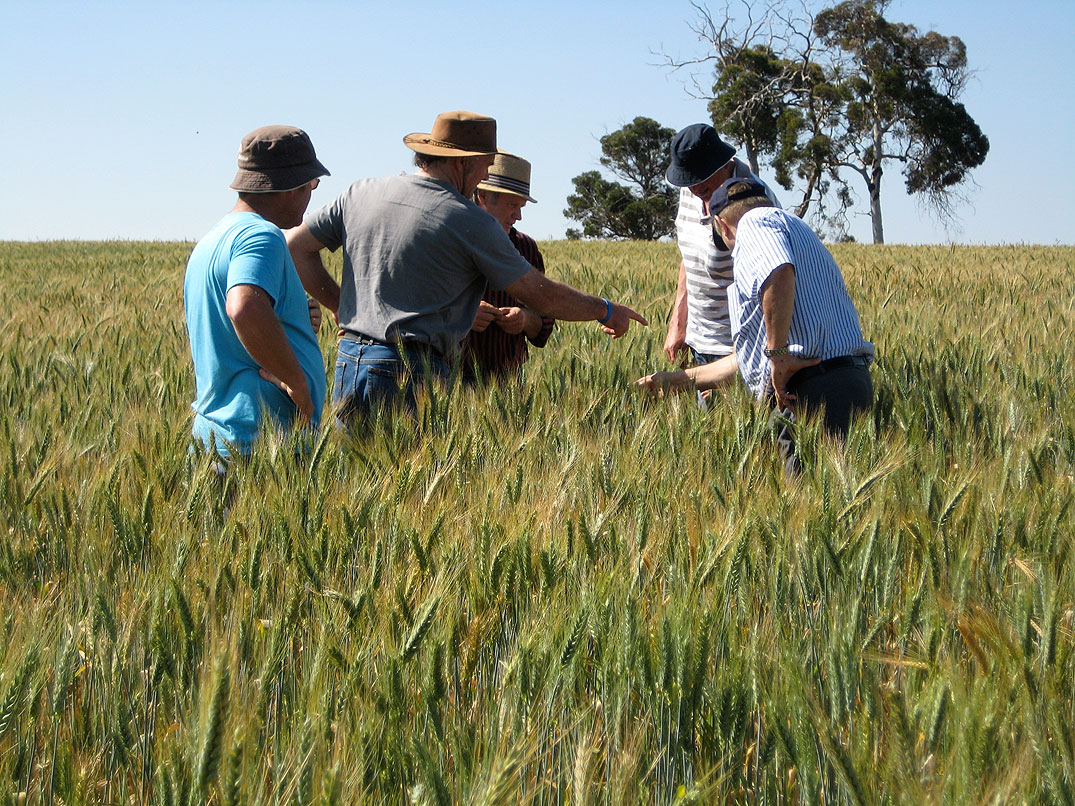
Todd, Wayne, Neil, Greg and Ron in discussion over a crop of Mace hard wheat that was sown in two-directions (Super Energy and Flexi-N foliar at 5-leaf stage).
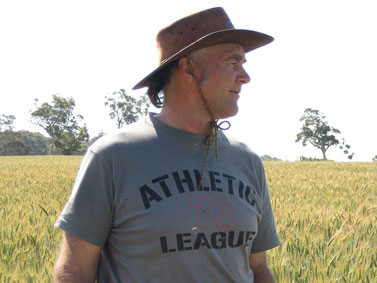
Wayne looking over his crop of Yitpi hard wheat sown in two-directions (Super Energy and Flexi-N foliar at 5-leaf stage).
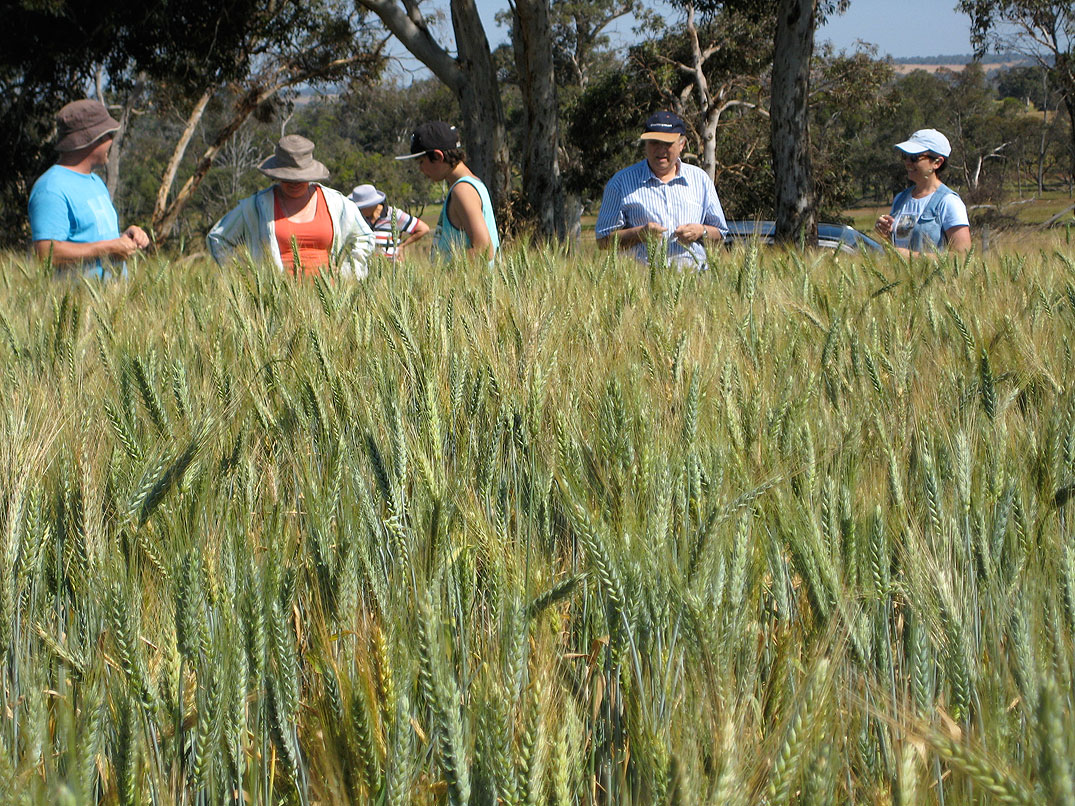
Visiting farmers inspecting crop of Calingiri noodle wheat sown in two-directions (Super Energy and Flexi-N at 5-leaf stage).
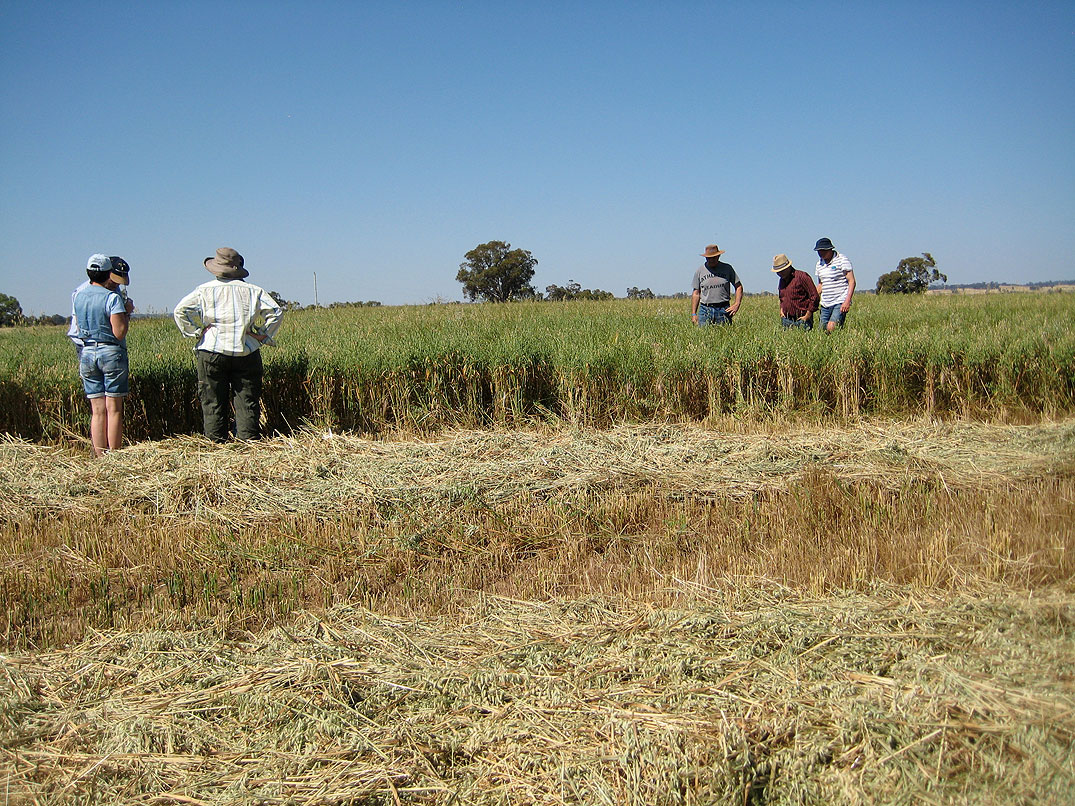
Farmers inspecting an oats (Dalyup) hay crop sown in two-directions (Super Energy and Flexi-N foliar at 5-leaf, and tillering stages).
© 2021-2024, Western Fertiliser Technology Pty Ltd.